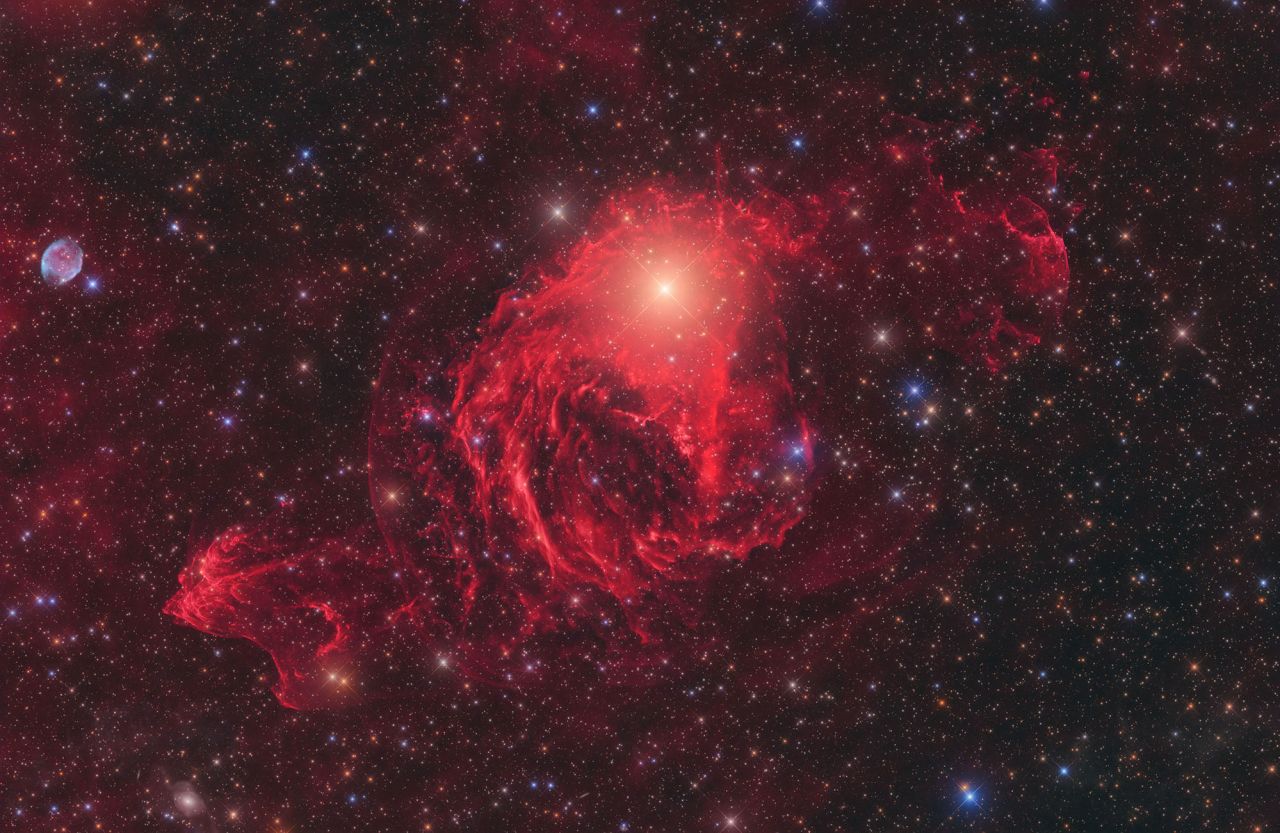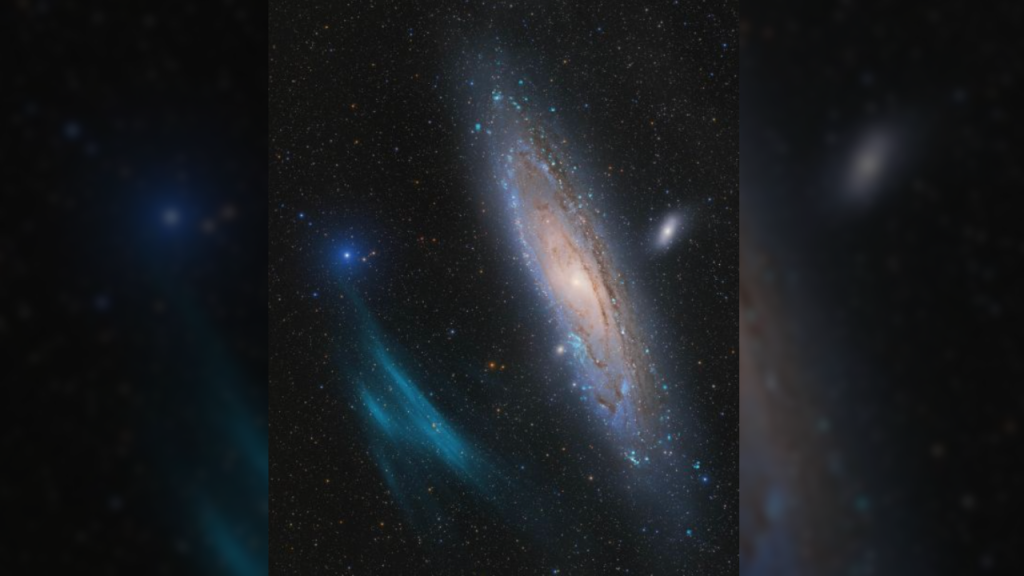Introduction
In a celebration of the cosmos, a team of amateur astronomers has claimed the prestigious title of Astronomy Photographer of the Year for 2023. Their captivating photograph features a colossal plasma arc adjacent to the Andromeda Galaxy, our nearest large spiral neighbour in the universe. This remarkable discovery has ignited excitement within the scientific community, and London’s Royal Observatory Greenwich, the competition’s host, has praised the image as a “surprising discovery.”
Andromeda’s Unprecedented Arc
The winning image, titled “Andromeda, Unexpected,” was captured by a team led by Marcel Drechsler, Xavier Strottner, and Yann Sainty. It unveils a massive plasma arc near the Andromeda Galaxy and is being hailed as potentially the most extensive structure of its kind near our Milky Way. The announcement has piqued the interest of astronomers and astrophotographers alike.
A Remarkable Blend of Beauty and Science
Judging this year’s competition was László Francsics, an astrophotographer, who expressed his astonishment at the winning photograph. Typically, images of new celestial discoveries are often blurry and faint. However, “Andromeda, Unexpected” breaks the mould. Francsics commended the image as both spectacular and scientifically valuable, showcasing Andromeda in a fresh light and raising the standards of astrophotography.
Scientific Exploration Begins
The astronomical community has wasted no time in commencing the investigation of this colossal cosmic structure. Situated in the immediate vicinity of the Andromeda Galaxy, scientists from around the world are now collaborating to study and understand this newfound phenomenon.
Other Remarkable Discoveries
In addition to the captivating Andromeda photograph, the competition also unveiled other breathtaking images. A team led by Marcel Drechsler and Xavier Strottner secured the top spot in the Stars & Nebula category with an image showcasing an ultra-deep stellar remnant within an unknown galactic nebula—a massive cloud of dust and gas where stars are born.

Young Astronomers Shine
The Young Astronomy Photographer of the Year award went to two talented 14-year-old boys from China, Runwei Xu and Binyu Wang. Their winning image featured the Running Chicken Nebula, named for its uncanny resemblance to a giant chicken sprinting across the celestial canvas. Located in the Centaurus constellation, approximately 6,000 light-years from Earth, this image impressed judges with its vibrant colours and embedded star cluster.

A Universe of Beauty
Additional awards were granted in various categories, including the Aurorae category for Monika Deviat’s abstract aurora image, the Our Moon category for Ethan Chappel’s moon passing in front of Mars, the Our Sun category for Eduardo Schaberger Poupeau’s sun with a massive solar filament resembling a question mark, and the Skyscapes category for Angel An’s capture of the rare phenomenon known as Sprites, where atmospheric luminescence resembles fireworks.
Innovation in Sound and Space
The innovation prize was bestowed upon John White for a unique endevour. White captured the sound of the black hole at the centre of the Perseus Galaxy using audio source material from NASA’s Chandra Sonification Project. He played this cosmic sound through a speaker with a petri dish attached, offering a unique sensory experience of space exploration.
An Illuminating Exhibition
The award-winning images will be showcased in an exhibition opening at London’s National Maritime Museum. These stunning celestial captures invite viewers to gaze upon the night sky with a fresh perspective, fostering a deeper appreciation for the wonders of the universe.
As Katherine Gazzard, Curator of Art (post-1800) at Royal Museums Greenwich, noted, this year’s winning images have illuminated the night sky in a whole new light, inspiring awe and fascination for the cosmos.
Feature image: A team of amateur astronomers led by Marcel Drechsler, Xavier Strottner and Yann Sainty made a surprising discovery to win the overall prize in the 2023 Astronomy Photographer of the Year competition. ¡Andromeda, Unexpected” shows a huge plasma arc next to the Andromeda Galaxy, the closest large spiral galaxy to our Milky Way.
Christie’s Unveils Dazzling Highlights from Art of the Islamic and Indian Worlds Sale

Contributor





